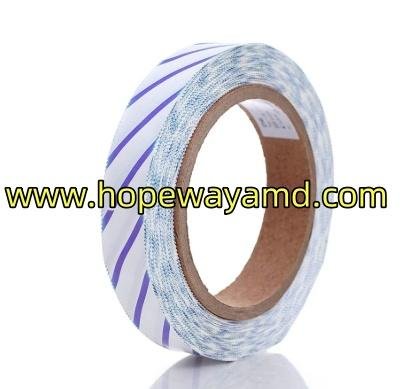The Transparent Advanced Barriers Market is witnessing steady growth, driven by the increasing need for high-performance materials that offer protection, durability, and visibility. These barriers play a vital role in industries such as packaging, solar energy, and flexible electronics, where balancing transparency with advanced protective functions is essential for product performance.
The demand is strongly influenced by shifting consumer preferences toward sustainable packaging solutions and the rising adoption of renewable energy systems. Transparent advanced barriers prevent moisture, oxygen, and other contaminants from affecting sensitive products while maintaining clarity and aesthetic appeal. Their application in electronics and solar modules is further boosting global adoption.
However, cost challenges and complex manufacturing processes pose hurdles for mass-scale adoption. Advanced barrier technologies often require sophisticated equipment and high-quality raw materials, limiting widespread use in cost-sensitive industries. Despite these constraints, ongoing innovations in nanotechnology and thin-film deposition processes are expected to unlock substantial opportunities for growth.
Transparent advanced barriers market size in 2024 is valued at USD 7.4 billion, driven by robust demand across various end-use sectors. The market is exhibiting a strong growth trajectory with a CAGR of 8.1% from 2025 to 2033. By the end of 2033, the market is forecasted to reach a value of USD 13.9 billion.
Request a Sample Report: https://researchintelo.com/request-sample/467
Market Dynamics
The Transparent Advanced Barriers Market is shaped by evolving industrial needs, consumer expectations, and technological breakthroughs.
Key Drivers
-
Sustainable packaging demand: Growing preference for eco-friendly, transparent packaging in food, pharmaceuticals, and cosmetics.
-
Electronics innovation: Expanding use in flexible displays, OLEDs, and sensors.
-
Renewable energy growth: Vital role in protecting solar modules and thin-film technologies.
Key Restraints
-
High production costs: Specialized materials and processes increase expenses.
-
Raw material limitations: Dependence on advanced polymers and films constrains growth.
-
Complex manufacturing: Precision requirements add challenges to scalability.
Opportunities
-
Nanotechnology integration: Enhancing barrier strength while retaining transparency.
-
Emerging markets: Strong growth prospects in Asia-Pacific and Latin America.
-
Circular economy: Rising demand for recyclable barrier films supports sustainability.
View Full Report: https://researchintelo.com/report/transparent-advanced-barriers-market
Global Market Trends
Industry research suggests the Transparent Advanced Barriers Market will expand at a CAGR of 7–9% over the next decade. This growth is attributed to rising demand for sustainable packaging and next-generation electronics.
-
Asia-Pacific: Expected to lead, fueled by strong electronics and packaging industries.
-
North America: Driven by innovation in renewable energy and high-tech manufacturing.
-
Europe: Focused on sustainability and circular economy strategies.
-
Rest of World: Increasing adoption in healthcare and industrial sectors.
Industry Innovations
Recent advancements highlight the evolving role of transparent advanced barriers in multiple sectors:
-
Flexible electronics: Use of transparent films for wearable devices and foldable screens.
-
Next-gen solar modules: Integration in thin-film solar panels for durability.
-
Eco-packaging solutions: Transparent recyclable films for food and pharmaceuticals.
-
Smart coatings: Enhanced protection against UV, oxygen, and environmental stress.
These innovations are accelerating the shift toward multifunctional and sustainable materials.
Enquire Before Buying: https://researchintelo.com/request-for-customization/467
Market Statistics and Insights
-
Global CAGR: Estimated 7–9% between 2024 and 2034.
-
Packaging sector: Accounts for more than 40% of global demand.
-
Electronics: Forecasted to grow by 8% annually, fueled by OLED and flexible display markets.
-
Renewable energy: Anticipated double-digit growth, driven by solar energy adoption.
These figures underline the growing importance of transparent advanced barriers across diverse applications.
Regional Market Outlook
-
Asia-Pacific: Leading market share, supported by robust electronics manufacturing and packaging demand.
-
North America: Strong adoption in advanced solar and smart electronics.
-
Europe: Regulations encouraging sustainable packaging are accelerating growth.
-
Latin America & Middle East: Expanding healthcare and industrial applications are boosting demand.
Each region demonstrates unique growth patterns, reflecting the global diversity of applications for transparent advanced barriers.
Future Opportunities
The Transparent Advanced Barriers Market holds strong promise, with sustainability and innovation at its core. Future growth will be shaped by:
-
Expansion of renewable energy infrastructure.
-
Development of advanced recycling technologies.
-
Greater adoption of nanotechnology-enabled barrier solutions.
While cost and production challenges remain, advances in scalable manufacturing processes are expected to broaden accessibility. Transparent advanced barriers are set to redefine standards in packaging, electronics, and clean energy.
Check Out the Report: https://researchintelo.com/checkout/467
Conclusion
The Transparent Advanced Barriers Market is on a trajectory of robust growth, driven by sustainability trends, technological innovation, and global demand for advanced protective materials. Packaging, electronics, and renewable energy are the primary sectors fueling this momentum.
According to Research Intelo, the market will continue expanding significantly over the coming years. Companies and stakeholders focusing on recyclable solutions, nanotechnology integration, and scalable manufacturing are best positioned to capitalize on emerging opportunities. Transparent advanced barriers are not just meeting today’s requirements but also shaping the material solutions of the future.



